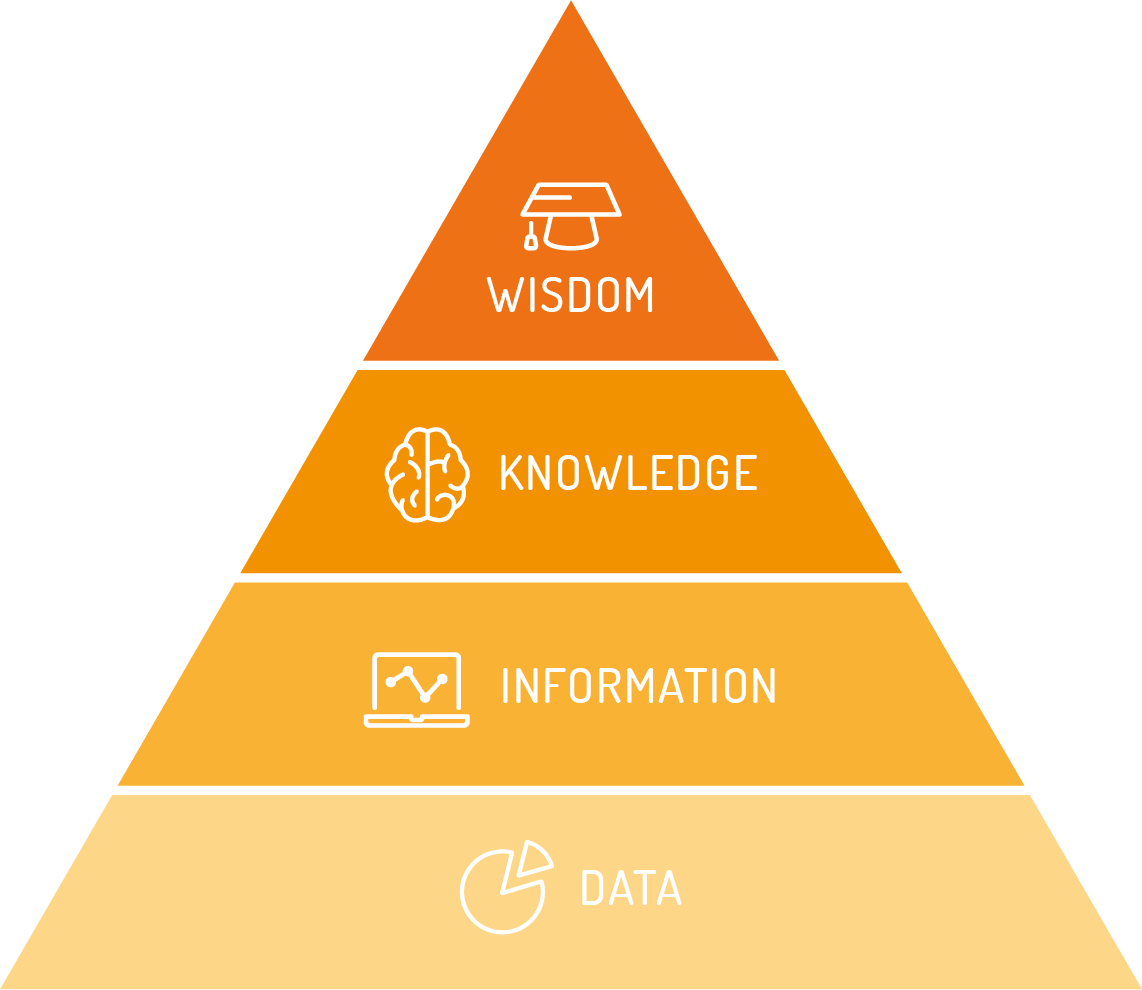The focus of the OSS industry often raises questions about whether it is addressing the most relevant areas, particularly in relation to the Hierarchy of Insight. The Hierarchy of insight is an evolution of the DIKW Pyramid (Data-Information-Knowledge-Wisdom), which is shown in the diagram below.
The DIKW concept has been around for nearly a century but became popular in the 1980s. It has since been expanded upon in fields like business analytics and data science. The more modern take, known as the Hierarchy of Insight has expanded upon the DIKW pyramid to include "insight" as an additional layer between “wisdom” and “knowledge.”
However, have you noticed that it’s common to hear each stage of the hierarchy (data → information → knowledge → insight → wisdom) used interchangeably?

Applying the Hierarchy of Insight to OSS Tools
The OSS tools of yesteryear and today are large data processing engines. We use them to process information, but one may ask whether we’re really using them to their full extent, to create corporate wisdom.
We’ll consider this through the following examples, starting from the bottom of the pyramid:
1. Data (Raw Network Telemetry, etc)
This is the foundational level, where OSS like SunVizion Network Inventory collect raw data from sources like network elements, element management systems, sensors and various other systems. These sources provide the core inputs needed for monitoring and management of telco networks.
Example: "The inventory database incorporates a network of 10,000 active connections"
2. Information (Processed Network Data)
At this stage, a variety of OSS tools such as inventory and network monitoring solutions aggregate and structure raw data to provide meaningful context. This enables operators to understand a little more about what's happening in their networks.
Example: "10,000 active connections are being handled across multiple domains, with 15% of network links nearing predefined capacity / congestion thresholds."
3. Knowledge (Analysed Network Information)
By leveraging more advanced analytics, OSS platforms can convert information into knowledge by identifying patterns, predicting outcomes and diagnosing issues that are appearing in the network. A typical OSS solution might perform this step through detailed network visualisation and automated analysis of performance data.
Example: "Based on historical data, certain nodes are likely to suffer congestion-related performance deterioration during peak hours due to high traffic loads."
4. Insight (Actionable Network Knowledge)
Insight emerges when OSS solutions suggest optimisations and/or proactive measures to apply to the network. Self-optimising solutions with planning and optimisation capabilities are able to apply actionable insights, such as recommending dynamic network adjustments, to reduce congestion or improve service quality.
Example: "Auto-rerouting traffic from certain heavily congested nodes during peak hours could improve performance by 20%, avoiding service degradation or disruptions"
5. Wisdom (Strategic Network Foresight)
At the highest level, OSS solutions enable telecom operators to apply strategic foresight for long-term network planning and operational improvements. SunVizion’s predictive modelling and simulation tools may help operators understand future demands, optimise capacity and plan expansions (and related capital allocations) efficiently.
Example: "Given projected growth in traffic consumption in this region over the next two years, augmenting the current network by deploying additional small cells in these specific areas will cater for growing demand while keeping operational costs under control."
Reflecting on the Priorities in the OSS Industry
Clearly, having an OSS that can assist operators to climb the hierarchy of insight, helps move from basic data collection to sophisticated insights and strategic planning. This in turn optimises network operations and enhances overall service delivery.
It seems obvious that we want to climb to Level 5 (Wisdom). However, you may wish to ponder whether we (collectively) have inverted this pyramid in terms of what we seek to prioritise. Ask yourself:
-
Which tier in the pyramid do we invest most in obtaining? Data?
-
Which do we discuss (argue about) the most? Data?
-
What do we spend the most time on specifying? Data (in terms of capture and transfer via APIs)?
-
Are our reports, dashboards and user interfaces showing raw data or displaying wisdom in the form of recommended actions to perform next or showing what management levers to pull?
-
Are executive and management functions utilising what our OSS produce to make important decisions?
A lot of raw data goes into our OSS. Is yours producing outputs at Level 1, Level 5 or somewhere in between?